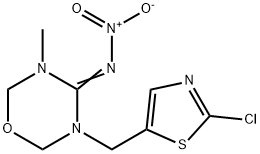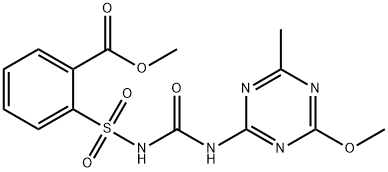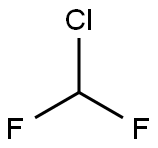Acetamiprid
- CAS NO.:135410-20-7
- Empirical Formula: C10H11ClN4
- Molecular Weight: 222.67
- MDL number: MFCD06201842
- EINECS: 603-921-1
- SAFETY DATA SHEET (SDS)
- Update Date: 2025-03-12 07:03:40

What is Acetamiprid?
Chemical properties
Pale Yellow Solid
The Uses of Acetamiprid
Acetamiprid is a systemic insecticide for soil and foliar application. It is used to control Hemiptera, especially aphids, Thysanoptera and Lepidoptera on a wide range of crops, especially vegetables, fruit and tea.
The Uses of Acetamiprid
A novel neonicotinid insecticide against Holotrichia consanguinea in sugarcane. Reports show that when exposed to neonicotinid pesticides honeybees have probelms returnign home after foraging and bumb lebee colonies grow poorly and produce fewer queens.
What are the applications of Application
Acetamiprid is a systemic neonicotinoid insecticide
Definition
ChEBI: The (E)-stereoisomer of acetamiprid.
Agricultural Uses
Insecticide: This class of pesticides are chemically related to nicotine and used on corn and soybean seeds and are used to control sucking and chewing insects, and soil insects including aphids, beetles, fruit moth, leaf-hoppers and-miners, thrips, whiteflies [83] . Also used to control fleas on domestic animals.
Metabolic pathway
Acetamiprid is relatively stable to hydrolysis and to photodegradation by sunlight. It is rapidly degraded in soils to form 6-chloropyridinyldimethylamine and 6-chloronicotinic acid. The main pathways of metabolism in plants are N-demethylation and subsequent oxidation affording 6-chloronicotinic acid and 6-chloropicolyl alcohol. Two N-cyanoamidines were formed after application of acetamiprid to cabbage leaves. No information is available on the fate of the insecticide in insects or mammals.
Degradation
Acetamiprid is stable in buffer solutions at pH 4, 5 and 7 and under sunlight. It is degraded slowly at pH 9 (45 °C) (PM). In a study of its hydrolysis acetamiprid was converted quantitatively to N-methyl- (6-chloro-3-pyridyl)methylamine (2) in 0.5-1 N sodium hydroxide at 90-95°C in 2 hours (see Scheme 1). N-Demethyl-acetamiprid (3) was converted to (6-chloro-3-pyridyl)methylamine(4) at the same rate and under similar conditions (Tokieda et al., 1997).
Properties of Acetamiprid
| Melting point: | 101-103°C |
| Boiling point: | 352.4±52.0 °C(Predicted) |
| Density | 1.17 |
| vapor pressure | <1 x 10-6 Pa (25 °C) |
| storage temp. | Inert atmosphere,2-8°C |
| solubility | DMSO: Soluble; Methanol: Soluble |
| form | A solid |
| pka | -0.44±0.10(Predicted) |
| Water Solubility | 4200 mg l-1 (25 °C) |
| color | White to off-white |
| InChI | InChI=1S/C10H11ClN4/c1-8(14-7-12)15(2)6-9-3-4-10(11)13-5-9/h3-5H,6H2,1-2H3/b14-8+ |
| CAS DataBase Reference | 135410-20-7(CAS DataBase Reference) |
| NIST Chemistry Reference | Acetamipride(135410-20-7) |
| EPA Substance Registry System | Acetamiprid (135410-20-7) |
Safety information for Acetamiprid
| Signal word | Danger |
| Pictogram(s) |
 Skull and Crossbones Acute Toxicity GHS06 |
| GHS Hazard Statements |
H301:Acute toxicity,oral H330:Acute toxicity,inhalation H412:Hazardous to the aquatic environment, long-term hazard |
| Precautionary Statement Codes |
P260:Do not breathe dust/fume/gas/mist/vapours/spray. P273:Avoid release to the environment. P284:Wear respiratory protection. P310:Immediately call a POISON CENTER or doctor/physician. P301+P310:IF SWALLOWED: Immediately call a POISON CENTER or doctor/physician. |
Computed Descriptors for Acetamiprid
| InChIKey | WCXDHFDTOYPNIE-RIYZIHGNSA-N |
| SMILES | C(/N(CC1=CC=C(Cl)N=C1)C)(=N\C#N)\C |
Acetamiprid manufacturer
New Products
Methyl (R)-1-Boc-4,4-difluoropyrrolidine-2-carboxylate 2,2-Difluoropropylamine hydrochloride tert-butyl 3-bromoazetidine-1-carboxylate (R)-1-Boc-3-hydroxypyrrolidine DIFLUOROACETIC ANHYDRIDE 2,2-Difluoropropionic acid Diallylamine, 99% Calcium hydroxide, 95% Aluminum oxide, basic 2-Bromophenylacetonitrile, 97% L-tert-Leucine,97% N-Hydroxy-2-methylpropanimidamide 4-(3,4-Dichlorophenyl)-3,4-Dihydro-N-Methyl-1-(2H)-Naphthalenimine (Schiff Base) 2-AMINO-3,5-DIBROMO BENZALDEHYDE [ADBA] L-Glutamic Acid Dimethyl Ester Hcl 10-Methoxy-5H-dibenz[b,f]azepine 5-Cyanophthalide N, N-Carbonyldiimidazole (CDI) Dibenzoyl Peroxide Titanium Dioxide 2-(Methylthio) Benzonitrile Sodium Acetate Anhydrous Allopurinol 1,5-DibromopentaneRelated products of tetrahydrofuran








You may like
-
 Acetamiprid 135410-20-7 / 160430-64-8 99%View Details
Acetamiprid 135410-20-7 / 160430-64-8 99%View Details
135410-20-7 / 160430-64-8 -
 135410-20-7 / 160430-64-8 98%View Details
135410-20-7 / 160430-64-8 98%View Details
135410-20-7 / 160430-64-8 -
 135410-20-7 / 160430-64-8 Acetamiprid 99%View Details
135410-20-7 / 160430-64-8 Acetamiprid 99%View Details
135410-20-7 / 160430-64-8 -
 Acetamiprid 98%View Details
Acetamiprid 98%View Details
135410-20-7 / 160430-64-8 -
 Acetamiprid 135410-20-7 / 160430-64-8 99%View Details
Acetamiprid 135410-20-7 / 160430-64-8 99%View Details
135410-20-7 / 160430-64-8 -
 135410-20-7 / 160430-64-8 99%View Details
135410-20-7 / 160430-64-8 99%View Details
135410-20-7 / 160430-64-8 -
 Acetamiprid 98%View Details
Acetamiprid 98%View Details
135410-20-7 / 160430-64-8 -
 Acetamiprid 135410-20-7 / 160430-64-8 99%View Details
Acetamiprid 135410-20-7 / 160430-64-8 99%View Details
135410-20-7 / 160430-64-8
